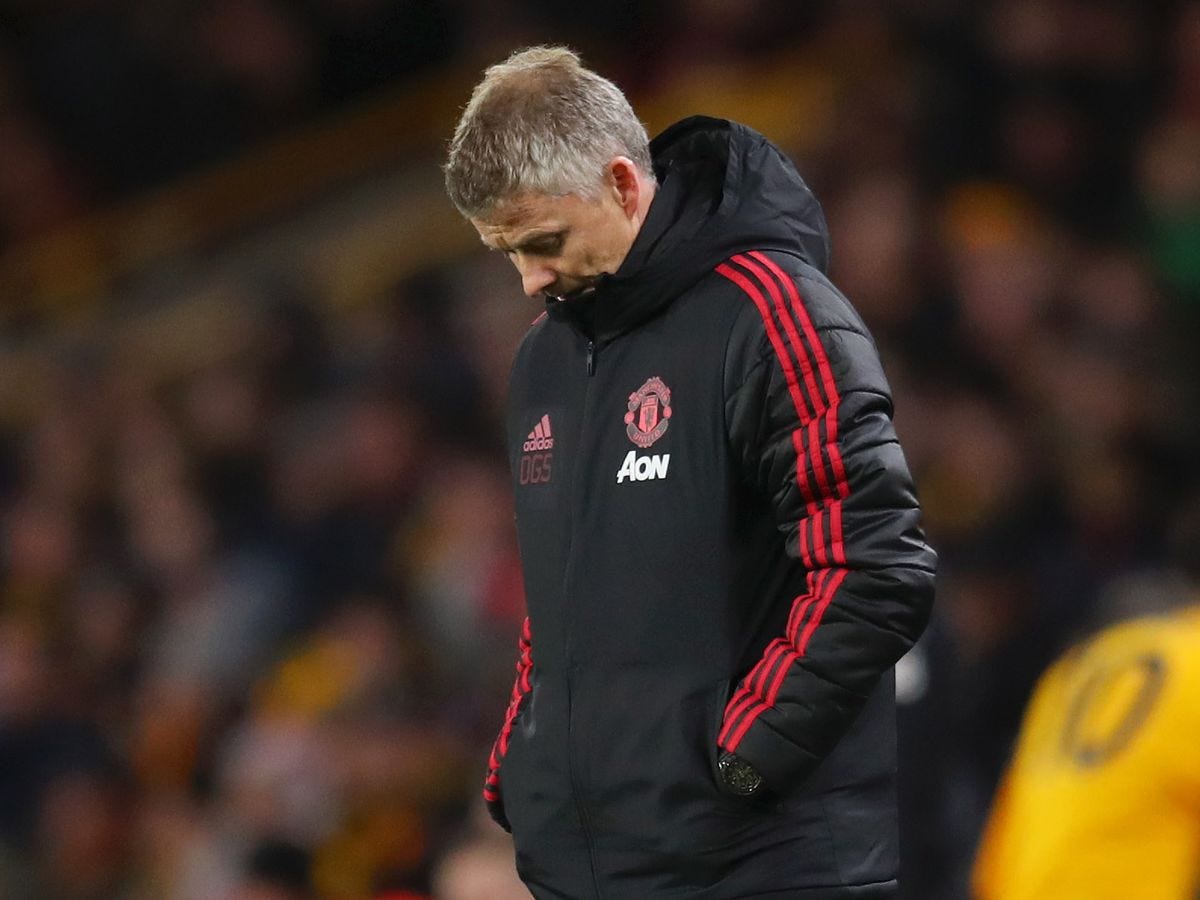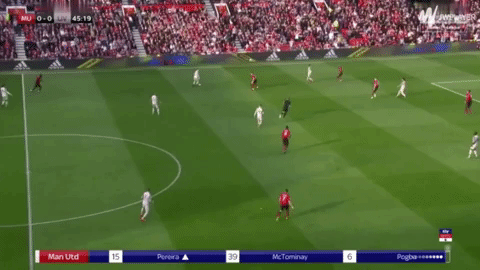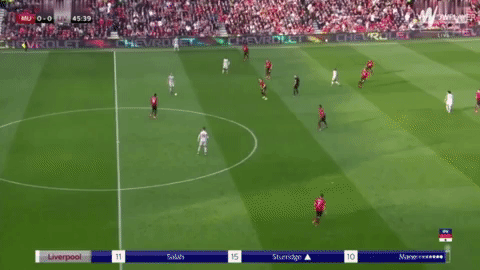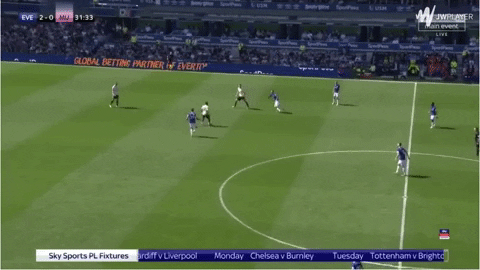The Different Tactical Eras of Ole Gunnar Solskjaer: Part Two
Solskjaer gets the permanent job and injuries ravage the squad
Note: this is part two of a five part series on Ole Gunnar Solskjaer and the distinctly different tactical ‘eras’ he’s had during his two years in charge of Manchester United. (Return to Part One here).
Please read the introduction for more information and if you haven’t done so yet, subscribe for more of Kwest Thoughts.
*Throughout this series advanced stats come from @statsbomb provided by @fbref. xPTS and some xG numbers coming from understat will be noted
Period: February 2019 (Crystal Palace away) - May 2019 (Cardiff home)
Base Formation: None
Most Benefitting Player: No one really. Luke Shaw?
Second Standout Player: Scott McTominay?
There are several different points in time that people will point to for when it all went wrong for Ole Gunnar Solskjaer. The injuries in the Liverpool match. The let down after the win in Paris. Getting handed the permanent job…
In truth, that “moment” happened way earlier. For Solskjaer, everything changed in one 45 minute half of football. That was all it took for his style, his tactics, to go out the window and bring up the need to go back to the drawing board.
Those 45 minutes came in the first leg of United’s Champions League tie against Paris Saint Germaine when both Jesse Lingard and Anthony Martial hobbled off with muscle injuries. Neither one of theme had been lighting up the goal scoring charts but their work rate and pressing were integral to United’s success.
Replacing them were the older legs of Alexis Sanchez and Juan Mata. Two players who very much lacked the requisite pace to press the way Solskjaer wanted. The result was United never stood a chance in the second half and should have considered themselves lucky to have escaped only 2-0 down.
Things would only go from bad to worse. A week later Nemanja Matic went down with a muscle injury before United’s match against Liverpool.
Everyone remembers what happened that day. First Ander Herrera hobbled off after 21 minutes, replaced by Andreas Pereira. Four minutes later, Juan Mata was replaced by Lingard who had seemingly made a miraculous recovery from his own hamstring injury. That recovery lasted less than 20 minutes before was replaced by Alexis Sanchez.
But what most people don’t remember is the injury that would probably have the biggest effect on the rest of United’s season. That came early in the game when Marcus Rashford hurt his ankle thanks to a Jordan Henderson tackle.
This happened before any of the other injuries, and it looked like Rashford would have to come off. Throughout the first half commentators Martin Tyler and Gary Neville wondered when Rashford would be taken off. He was moving so gingerly that even though United had no subs left, they were genuinely stunned when he came back out for the second half.
Rashford might have been on the pitch in the second half, but United were essentially playing with 10 men as Rashford wasn’t doing much more than just standing in the center circle.
Rashford would only miss one game but he was never the same player. The ankle was clearly bothering him for the rest of the season and it greatly effected how OGS could use him.
United were undone by a spate of muscle injuries that Solskjaer acknowledged was brought on by the intensity of his training and playing style.
Solskjaer would manage to hold things together a bit longer by reeling off consecutive victories against Crystal Palace, Southampton, and that night in Paris. But with four of his first choice front six out - and Rashford playing on one foot - it was time for a tactical rethink to figure out how he could get the best out of this team.
It was during this era that Solskjaer’s tactics started coming into question. This was when the narrative that Ole was tactically clueless or didn’t have any tactics came about and I’ll be honest, it’s because he didn’t.
There was no dominant or base formation used during this time. That changed on a game by game basis. He deployed a 4-4-2 diamond with Juan Mata at the top against Liverpool, a 4-3-3 against Crystal Palace a few days later. Then Alexis Sanchez played as a false 9 in a 4-3-3 against Southampton.
The trip to Paris saw United come out in an old fashioned 4-4-2. He played Paul Pogba as the no. 10 in a 4-2-3-1 in that bottoming out loss to Everton, and then a back five three days later at home to Manchester City.
If he settled on anything it was any formation that could allow him to play two up top, usually a hobbled Rashford and Romelu Lukaku. Paul Pogba was a mainstay in midfield but the other two spots ranged anywhere from Matic, Herrera, Fred, McTominay, and far more Andreas Pereira than you’d like to remember.
From the outside it was easy to say he didn’t know what he was doing, or that he didn’t know his best team. In reality he was desperate to get his team going but nothing would work.
With Matic and Herrera out, United lacked the ball winners in midfield to do the defensive work and get the ball up to Pogba. Even when Matic came back neither Fred nor McTominay proved to be able to replicate what Herrera did and thus the midfield still couldn’t get the ball up to Pogba.
To alleviate this problem, Pogba would often have to drop deep, which turned United’s attack into nothing more than Pogba launching long balls in the direction of a hobbled Marcus Rashford.
Solskjaer was trying everything to the point where in the second half against Everton he dropped Pogba next to Matic and played McTominay on the right wing of a 4-4-2!
Once Solskjaer got the job on a full time basis it was also clear Ander Herrera would be leaving at the end of the season. Solskjaer then took the attitude of “i’ll be here next year, you won’t,” and routinely dropped the Spaniard as he tried to assess what he had in the squad for next season. It never worked and it was telling that when Chelsea visited Old Trafford and Champions League qualification was very much alive, Herrera returned to the starting XI.
Even when players like Lingard and Martial returned from injury it was clear they weren’t 100 percent fit. With his players worn down, injured, or just naturally lacking pace United couldn’t press as much as they used. With a team comprised of a bunch of bang average players, they couldn’t do much of anything.
For a myriad of reasons - mainly the fact that everyone was hurt and running on fumes - no particular player stood out during this time. Marcus Rashford scored one goal after his penalty against PSG. Martial also had one. Lukaku didn’t find the net again. This was a team that went over 530 minutes without scoring from open play.
There was Scott McTominay. The first ‘official’ thing Solskjaer did as manager of United was giving McTominay a contract extension. That came in direct contrast to how he completely dropped him from the matchday squad, with the Scot only making the matchday 18 once in Solskjaer first eight Premier League games. When McTominay started against Liverpool he had only played 108 minutes since Solskjaer had taken over.
McTominay’s lack of playing time in January and February gave him something his teammates lacked. Fresh legs. Already known for his energy McTominay scored his first two goals for the club in the final two months of the season, but really stood out simply by looking like the only United player who was ever trying.
There was also Luke Shaw. With Solskjaer opting for split strikers more often than not, Shaw was tasked with a more attacking role to provide the width for United. A role which he happily obliged.
Shaw provided three of his career best four Premier League assists following the Liverpool match (0.38 assists per 90). During that time his expected assists also rose to 0.26 per 90, much higher than his career average. Shaw’s good form helped him capture both United’s fans and players Player of the Season award. Albeit there was an element of slim pickings to the choices.
The season finally came to a close and it was time to prepare for next season. There were certain things that were clear to Solskjaer and certain questions that needed to be answered.
Ander Herrera was leaving, and United didn’t have a replacement for him, which meant the 4-3-3 that was so successful wasn’t going to work. After a hot start, Marcus Rashford was showing that he wasn’t really a center forward. More concerning was the fact that shortly after Ole came on board, Anthony Martial signed a new five year contract, but the Frenchman only found the back of the net twice in all of Ole’s time.
As well as United were playing at times, the system wasn’t getting the best out of Martial, which presents a bit of a problem when the club just made a long term financial commitment to him. Ole was going to need to figure all this out and more. And he was only going to have a few weeks to do it.
Up next - Part Three: Martial as the false-9















